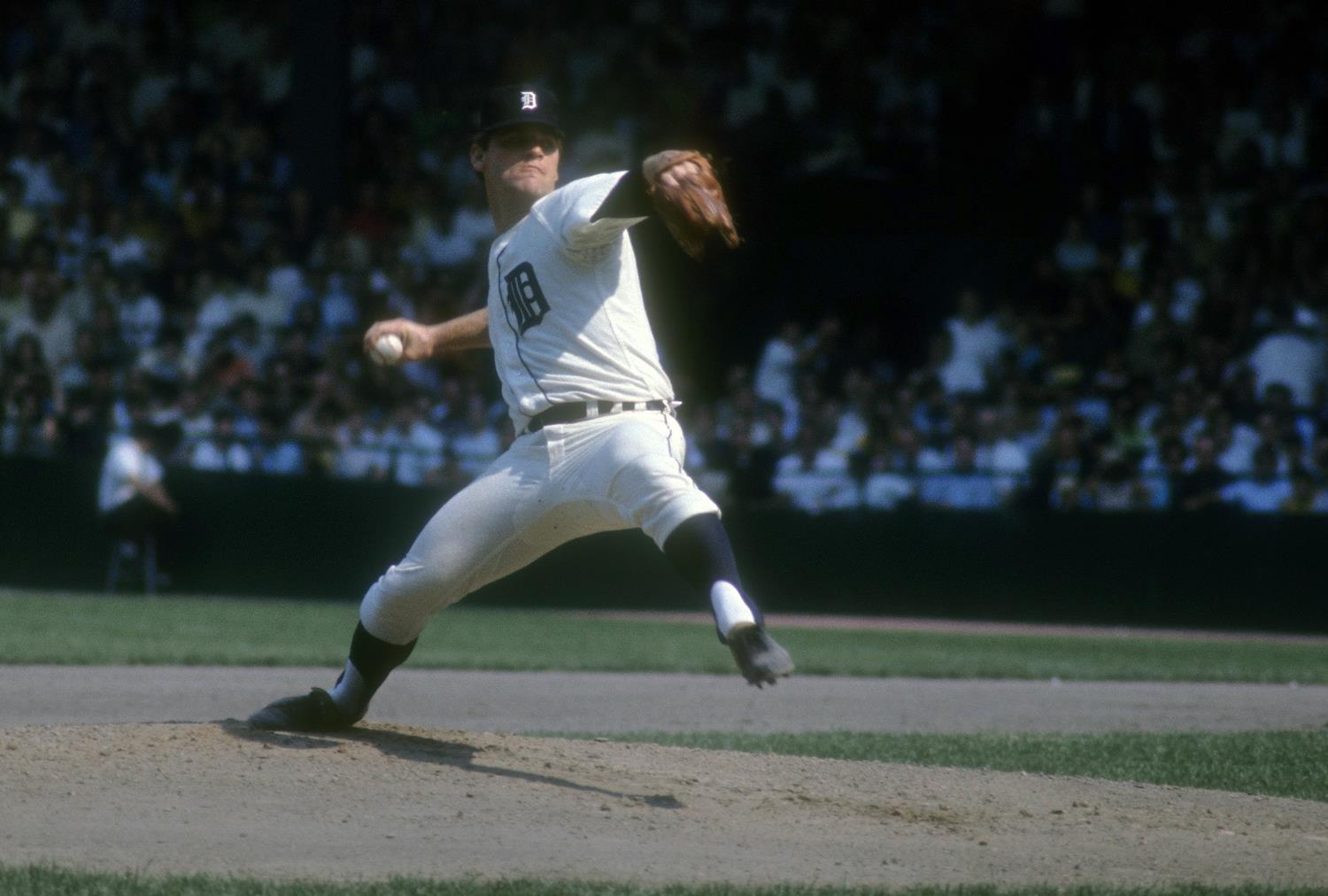Whenever you’re talking about baseball and the season of 1968, there’s one phrase that always comes up: The Year of the Pitcher.
Perhaps never before had pitching so dominated baseball in both Leagues. A handful of the best seasons ever were turned in by hurlers…and, as it turned out, the top pitcher in the National League and the top in the American League would face each other in the World Series. Unexpectedly though, a different pitcher would be the Series star with an amazing performance.
Here’s a look back at the state of pitching in 1968, starting with the two dominant pitchers in each League.
Denny McLain won 31 games. The right-handed Detroit Tigers pitcher won 31 games in ’68, and he is the last MLB pitcher to do so. McLain’s record was 31-6, and he led the AL in starts (41), complete games (28) and innings pitched (336). He also won the Cy Young Award and the AL MVP Award. He recorded six shutouts on the season and had an ERA under 2.00.
Bob Gibson had a 1.12 era for the season. The St. Louis star was almost unhittable in ’68. On his way to a record of 22-9, he threw 13 shutouts, including five straight at one point, and he led the National League in strikeouts.He also threw 28 complete games. Like McLain, Gibson took home the Cy Young and MVP awards for the National League.
Gibson and McLain combined for 53 wins, 19 shutouts and 56 complete games!
A big strike zone helped all the pitchers in 1968.
The most significant factor in the Year of the Pitcher was the generous strike zone of 1968. A little background: In ’62, the strike zone went from the batter’s armpits to the top of the knees; but then baseball decided to expand it for the 1963 season…to help pitchers.
Why? The thinking was that since MLB had added four new teams (the Mets, the Colt .45s, the Angels and the Senators) over the previous two seasons, some pitchers who wouldn’t have otherwise succeeded in the Majors were now on MLB rosters. A bigger strike zone would help them out, so baseball made the rule change.
From ’63 to ’68, the strike zone was bigger. It went from the top of the batter’s shoulders to the knees. So, in 1968, the generous strike zone was still in effect—and it made the top pitchers of the day even better.
It wasn’t the Year of the Hitter.
What happens when pitchers have years to get used to a big strike zone? Traditional batting averages take a nosedive.
- In ’68, the cumulative batting average for the American League was .230, the lowest of all time till then.
- Carl Yastrzemski won the AL batting title with a .301 average. He was the only American League hitter to reach .300.
- The National League won that year’s All-Star Game by a score of 1-0. The only run came across the plate on a double play. There were 20 strikeouts and only eight hits.
- Early in the season, the Mets and the Astros were in the 24th inning of a scoreless tie when Houston scored a lone run on a bobbled ground ball that could have been an inning-ending double play.
Here are a few other pitchers who made the news in 1968:
- Juan Marichal. The San Francisco righty won 26 games (the most in the majors), pitched 30 complete games (most in the majors) and logged 325 innings.
- Don Drysdale. The Dodger right-hander threw six straight shutouts on his way to a then-record 58 1/3 consecutive scoreless innings.
- Luis Tiant. The Cleveland pitcher won 21 games and had his own streak of 41 scoreless innings. Tiant led the AL with a 1.60 ERA and nine shutouts.
- Gaylord Perry. He threw a no-hitter against the Cardinals on September 17th, defeating Bob Gibson 1-0. The next day, Cardinal pitcher Ray Washburn returned the favor, throwing a no-hitter against the Giants.
The World Series showdown.
Gibson and McLain led their teams to the pennant and the Cardinals and Tigers faced off in the 1968 Fall Classic. Most people thought it would be a showdown between the two aces, and while pitching was a huge factor, the series shook out a little differently. Gibson was on, McLain was off, and Mickey Lolich, a 17-game winner for the Tigers that year, was the pitching hero.
Game 1: Gibson vs. McLain. Gibson struck out 17 batters, setting a new World Series record. McLain took the loss.
Game 2: Lolich pitched a complete-game win and the Tigers won 2-1.
Game 3: St. Louis won Game 3 by a score of 7-3.
Game 4: Gibson vs. McLain. Gibson struck out 10 batters and got the win in a 10-1 blowout. McLain was the losing pitcher again.
Game 5: Lolich pitched another complete game and picked up his second win, 5-3.
Game 6: McLain finally got a win in a huge 13-1 blowout for the Tigers.
Game 7: Gibson vs. Lolich. Each pitcher was going for their third win of the Series. Lolich got the victory by pitching his third complete game and guiding the Tigers to a 4-1 victory and the World Series title.
End of an era.
1968 was too good to be true for MLB pitchers, and it turned out to be the end of their reign on the hill. Before the start of the 1969 season, baseball made a few rule changes. For one, they went back to the smaller, pre-1963 strike zone, and they also lowered the pitching mound, from 15 inches to 10 inches in height.
The Year of the Pitcher was over—but it’s fun to look back at its place in baseball history.

